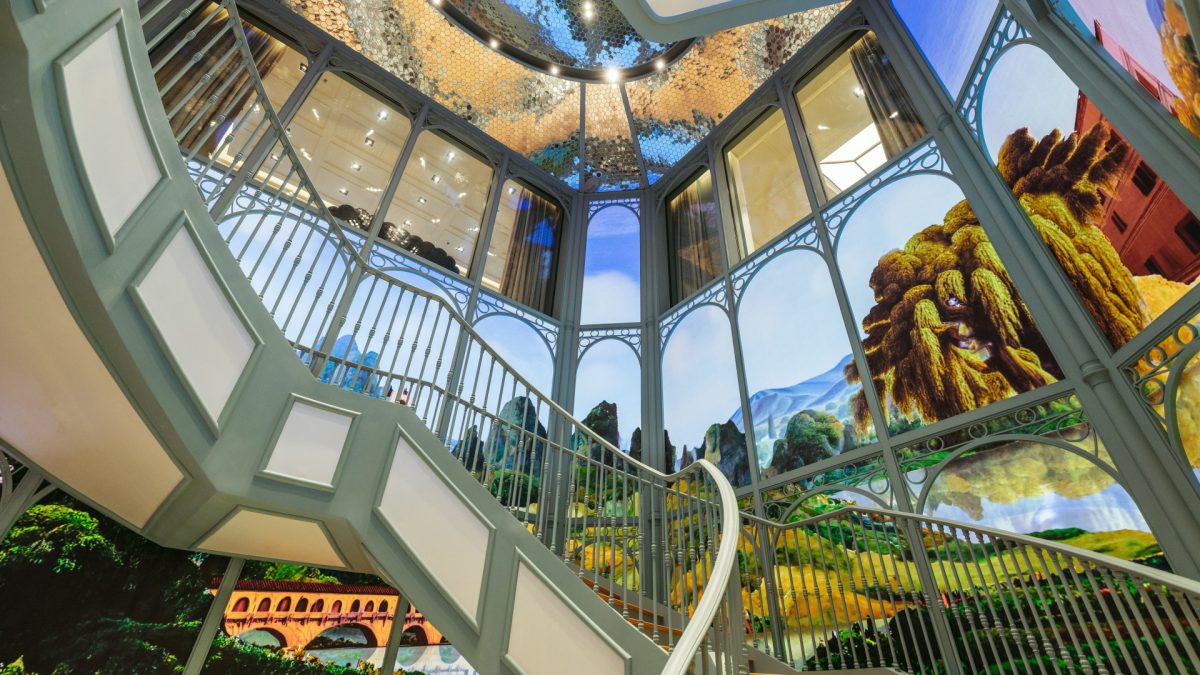Combining the brand’s Italian heritage with Chengdu’s natural landscape, Gucci’s Chengdu store demonstrates AI’s potential for immersive retail.
Key features
AI-generated imagery adorns the walls of Gucci’s Chengdu, China, outpost designed by Random Studio. Imagery combining Renaissance-age Florentine architecture and Chengdu’s mountainous landscape is displayed on 33 LED screens spanning the store’s three storeys, creating an ever-changing immersive landscape. When the brand sought to create a permanent but dynamic environment, Random turned to AI. The designer programmed the AI to retrieve images and footage of Florence and Chengdu and combine it together, a process that had to be refined. The architect had to overcome inherent biases in the intelligence tool to ensure that the images were as accurate as possible, an iterative process between humans and the machine. The images were then animated by hand to bring them to life, creating scenes where birds and butterflies are moving, and the sun is rising and setting.
‘A lot of work went into connecting the scenes together and making a story, as well as post-processing the footage,’ says Random Studio’s technical director Larix Kortbeek. ‘Working in this way creates an interesting interplay between AI and human creativity.’
FRAME’s take
AI has been present in the popular vernacular for some time now, but with the rise of technology like ChatGPT its applications and implications for spatial design have become increasingly commonplace. Random Studio’s use of AI in the Chengdu Gucci store shows the range of this type of technology and that it has a place in spatial design; that AI isn’t just a hype but has real-life applications. It also shows that AI isn’t a replacement for interior designers but is a tool that can be harnessed by them to create highly tailored solutions to complex problems, as Kortbeek explains. ‘Image and language models are undoubtedly here to stay, and we’re just at the very beginnings of discovering their utility and applications,’ trained architect and cloud-based spatial planner Andrew Heumann said in an interview with FRAME. ‘What these models are not is a replacement for human design thinking – you still have to decide what you want to ask them to do for you, which is nothing short of a radically accessible form of programming.’
Besides its demonstration of the range of applications AI can have for the practice of interior design and architecture, it also has sustainability implications. A spatial makeover requires almost no hard material and can be transformed by trained artists and digital architects.

